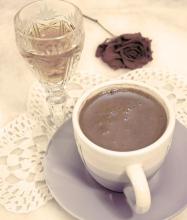Introduction to the taste of Kilimanjaro coffee with woody aroma
Tanzania is also often compared with its nearest neighbor Kenya. It is said that the earliest Arabica coffee in Tanzania was introduced by Christians from Kenya and is similar to Kenya in flavor characteristics. With grapefruit aromas and soft and bright acidity. However, because the economic conditions of Tanzania are worse than those of Kenya, the production conditions are poor. Tanzania's quality control is not strict enough, destroying the quality of coffee in many processing links, which can not compete with Kenya, which is famous for its high quality. Although it is similar to the Kenyan flavor, Tanzania as a whole is smoother and softer and belongs to the balanced type. With moderately low acidity and sweetness, dark chocolate finish, moderate mellow thickness. Compared with Kenya, which has a prominent personality, Tanzania is less hierarchical and does not give a very prominent feature after drinking, which makes people less impressive. But on the contrary, its soft and round characteristics are also more pleasing, which is easy to be accepted by people who are new to coffee.
The picture above shows washed beans from Kilimanjaro, Tanzania, planted above 1800 meters above sea level. Cooked beans are moderately baked. Raw beans show yellowish green, beans particles are small and round, the particle size is more uniform. When the hand flashes, Tanzania's performance is slightly lower than that of Kenya, and it is prone to the smell of cucumbers and green beans. The acidity will be concentrated in the front, and after moderate acidity and sweetness, it will show chocolate and woody aromas. As for the cooking method of this bean, I recommend siphon. The siphon pot will enhance the sweetness and make the flavor more concentrated, and the increase of alcohol thickness will make up for the thinness of the flavor. On the whole, the performance of the siphon pot is better than that of hand flushing.
Mount Mount Kilimanjaro, located in northeastern Tanzania, is the highest mountain in Africa at 5895 meters above sea level. The ultra-high altitude makes the top of the mountain snow all the year round, while Tanzania's main coffee producing area is located at the foot of Mount Kilimanjaro. The area is rich in volcanic soil, which brings an adequate supply of nutrients for the growth of coffee trees. Coffee trees are generally planted at high elevations above 1150 meters, which is one of the prerequisites for Arabica to develop a high-quality flavor.
Tanzanian coffee is mostly washed. After picking, coffee farmers will send the coffee fruit to the nearest processing plant for processing. The treatment step of the water washing method is to screen and remove the impurities in the coffee fruit, then remove the coffee pulp and exocarp, and send it into the fermentation tank to remove the pectin layer on the inner pericarp by fermentation. clean and then dry. Coffee in Tanzania is graded in the same way as in Kenya, both according to the size of coffee beans. When screening, let the raw coffee beans pass through the screen with fixed size holes. The larger the number of the screen is, the larger the particles of the raw coffee beans are. The flat beans classified by size are mainly AA+, AA and AB. In addition, PB (peaBerry), which is widely produced in Kenya and Tanzania, also has a set of sieve size standards, which specifically classify the size of round beans.

Important Notice :
前街咖啡 FrontStreet Coffee has moved to new addredd:
FrontStreet Coffee Address: 315,Donghua East Road,GuangZhou
Tel:020 38364473
- Prev

Description of the Flavor of Guatemalan Coffee with Fine Sour; introduction to the processing methods of fine coffee
Guatemala is located in the tropics, the northern and eastern coastal plains have a tropical rain forest climate, the southern mountains have a subtropical climate, the year is divided into two dry and wet seasons, with the wet season from May to October and the dry season from November to April of the following year. The narrow and fertile flatlands on the Pacific side of Guatemala have a tropical climate. The central plateau is also the cultural center of Guatemala, where the year-round temperature ranges from 1300 to 1800 meters.
- Next

A delicious boutique Dominican Santo Domingo Coffee Flavor description method
Fresh and elegant, full of particles, excellent acidity and pleasant fragrance. The Dominican Republic is located in the east of the island of Haiti in the West Indies, bordering the Republic of Haiti to the west, the Atlantic Ocean to the north and the Caribbean Sea to the south. With an area of about 49000 square kilometers and a population of 7.1 million, the Dominican Republic and the Republic of Haiti coexist on an island bordering Haiti. Like its neighbor, Dominica
Related
- Detailed explanation of Jadeite planting Land in Panamanian Jadeite Manor introduction to the grading system of Jadeite competitive bidding, Red bid, Green bid and Rose Summer
- Story of Coffee planting in Brenka region of Costa Rica Stonehenge Manor anaerobic heavy honey treatment of flavor mouth
- What's on the barrel of Blue Mountain Coffee beans?
- Can American coffee also pull flowers? How to use hot American style to pull out a good-looking pattern?
- Can you make a cold extract with coffee beans? What is the right proportion for cold-extracted coffee formula?
- Indonesian PWN Gold Mandrine Coffee Origin Features Flavor How to Chong? Mandolin coffee is American.
- A brief introduction to the flavor characteristics of Brazilian yellow bourbon coffee beans
- What is the effect of different water quality on the flavor of cold-extracted coffee? What kind of water is best for brewing coffee?
- Why do you think of Rose Summer whenever you mention Panamanian coffee?
- Introduction to the characteristics of authentic blue mountain coffee bean producing areas? What is the CIB Coffee Authority in Jamaica?

